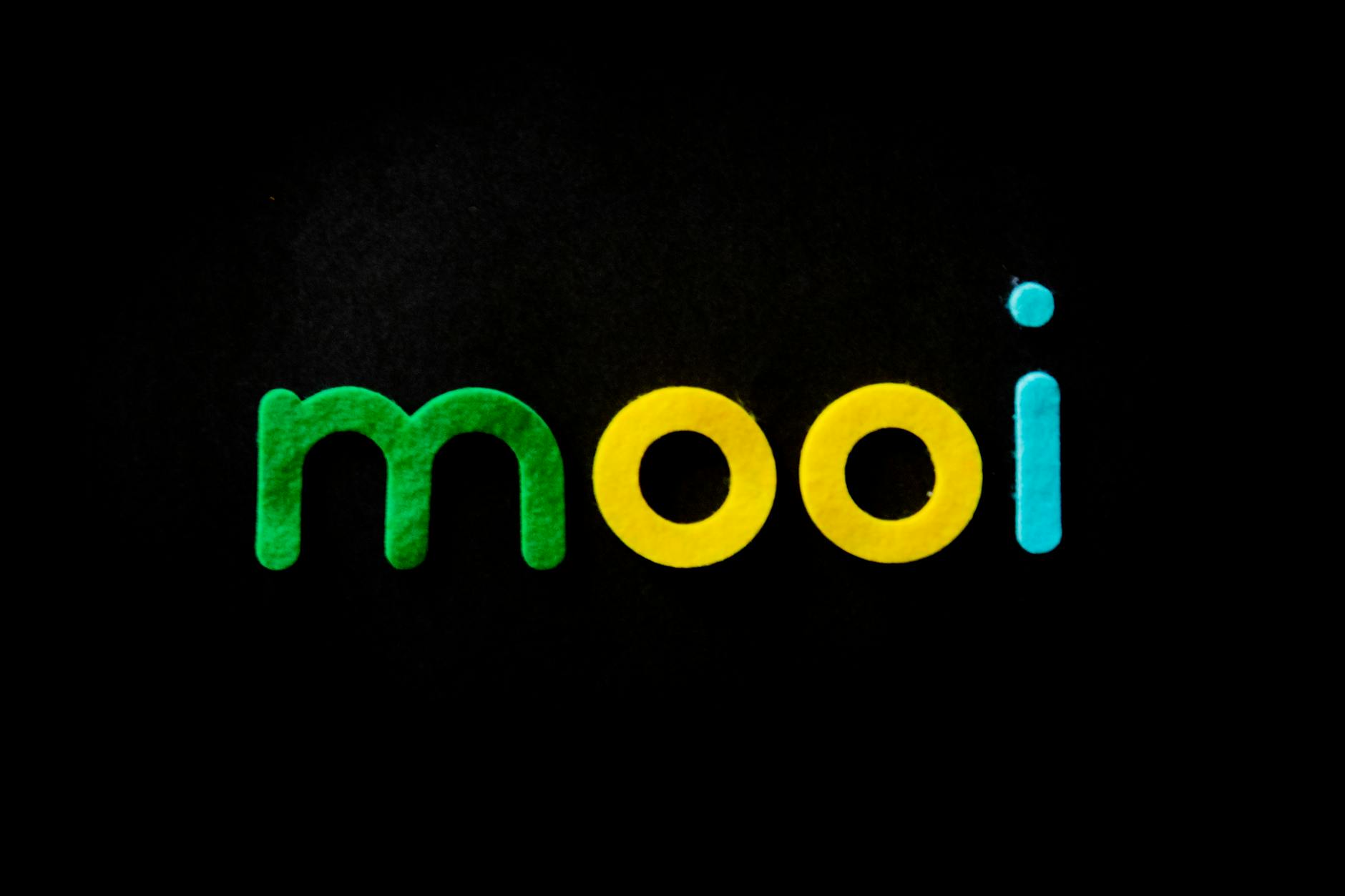How to Make Your Online Brand Desirable: A Comprehensive Guide to Building a Strong and Engaging Brand Identity
Making your online brand desirable is no small feat but it is achievable with the right strategies. It involves more than just designing a catchy logo; it’s about building a complete identity that resonates with your target audience and stands out in the crowded digital marketplace.
Creating a desirable online brand involves thoughtfully crafting the personality of your business, communicating its core values effectively, and delivering on your promises to customers. This process is more than just creating an attractive visual identity; it’s about shaping the impression your brand leaves on your customers and setting the right expectations for their interactions with your company.
A strong brand identity is vital in making your online brand desirable. It’s the personality of your business, the promise to your customers, and the unique set of features that distinguish your organization from the rest. With a strong brand identity, your business can create lasting impressions on your customers and stand out amidst the intense competition in the online marketplace.
In essence, making your online brand desirable is about creating a brand that your target audience can connect with on a deeper level. It’s about understanding your audience’s needs and preferences and aligning your brand’s personality, values, and promises with these insights. This way, your brand becomes more than just a name or symbol; it becomes a trusted and preferred choice for your target audience.
In the following sections, we’ll delve deeper into strategies for creating a desirable online brand, drawing from strong examples of successful brand identities.
Remember, creating a desirable online brand is a continuous process that requires consistent efforts, strategic thinking, and a deep understanding of your target audience. But with the right strategies and a strong commitment to your brand’s identity, you can make your online brand not just desirable, but irresistible.
Develop a Strong, Cohesive Brand Identity
Creating a strong and cohesive brand identity is crucial for making your online brand desirable. Your brand identity is the visual representation of your business and what sets it apart from others in the market. In this section, we will explore three key elements to develop a strong, cohesive brand identity: creating a unique brand name, designing a memorable logo, and establishing a consistent visual aesthetic.
Create a Unique Brand Name

Clear Glass Bottle on White Paper (Photo by Valeriia Miller)
Having a unique brand name is essential for standing out in a crowded online marketplace. When choosing a brand name, consider its relevance to your business and target audience. Aim for a name that is catchy, easy to remember, and reflects your brand’s values and personality. Conduct thorough research to ensure that your chosen name is not already in use and check for domain name availability.
Design a Memorable Logo

Mooi Logo (Photo by Magda Ehlers)
A well-designed logo is a powerful visual symbol that represents your brand. It should be instantly recognizable and leave a lasting impression on your audience. When designing your logo, think about your brand’s values, target audience, and industry. Consider hiring a professional graphic designer who can translate your brand’s essence into a visually appealing logo. Choose colors, fonts, and shapes that align with your brand’s personality and evoke the desired emotions in your audience.
Establish a Consistent Visual Aesthetic

Clear Glass Bottle on White Paper (Photo by Valeriia Miller)
Maintaining a consistent visual aesthetic across all your online platforms is essential for building a cohesive brand identity. Develop a brand style guide that outlines guidelines for colors, fonts, imagery, and overall design elements. Consistency in visual elements such as website design, social media posts, and marketing materials helps consumers recognize and connect with your brand easily. This consistency builds trust and reinforces your brand’s reputation.
In conclusion, developing a strong, cohesive brand identity is vital for making your online brand desirable. By creating a unique brand name, designing a memorable logo, and establishing a consistent visual aesthetic, you can effectively differentiate your brand and leave a lasting impression on your target audience. Remember, a strong brand identity sets the foundation for successful online branding.
Related websites:
- The Importance of Brand Identity
- Choosing a Memorable Brand Name
- Design Principles for Effective Logos
How to Make Your Online Brand Desirable?
Create Valuable and Engaging Content
In today’s digital landscape, creating valuable and engaging content is crucial to making your online brand desirable. By consistently producing blog posts, utilizing video content, and incorporating graphics and photos, you can capture the attention of your audience and establish your brand as a trusted source of information and entertainment.
Consistently Produce Blog Posts
Regularly publishing blog posts is a powerful way to engage with your audience and establish yourself as an authority in your industry. By consistently providing valuable and informative content, you can build a loyal following and keep your audience coming back for more.
To create high-quality blog posts, consider researching trending topics in your niche and addressing common questions or pain points your target audience may have. By offering solutions and insights, you can position your brand as a valuable resource.
Remember to use an informal tone, engage the reader with personal pronouns, and ask rhetorical questions to maintain their interest throughout the post. Incorporating analogies and metaphors can also help simplify complex concepts and make your content more relatable.
Utilize Video Content
With the rise of video platforms like YouTube and TikTok, incorporating video content into your online brand strategy is essential. Videos have the power to captivate and engage your audience in a way that written content cannot.
Consider creating video tutorials, product demonstrations, or even behind-the-scenes footage to give your audience an inside look at your brand. Videos allow you to showcase your expertise and connect with your audience on a more personal level.
When creating video content, be sure to optimize your videos for search engines by using relevant keywords in the title, description, and tags. This will help increase your visibility and attract organic traffic to your brand’s website or social media channels.
Incorporate Graphics and Photos
Visual content, such as graphics and photos, can significantly enhance the appeal and shareability of your online brand. Eye-catching visuals not only grab attention but also help convey your brand’s message and story.
Consider using infographics to present data or statistics in a visually appealing and easy-to-digest format. Including high-quality photos that align with your brand’s aesthetic can also help create a cohesive and memorable online presence.
Remember to optimize your images by using alt tags and descriptive file names. This will not only improve your website’s accessibility but also make your content more discoverable through image search engines.
Incorporating relevant links to other reputable websites within your content can provide additional context and resources for your audience. Be sure to use anchor text that is relevant to the linked content, making it clear what the reader can expect by clicking on the link.
By consistently producing blog posts, utilizing video content, and incorporating graphics and photos, you can create valuable and engaging content that resonates with your audience. Remember to keep your tone informal, engage the reader with personal pronouns, and use rhetorical questions, analogies, and metaphors to maintain their interest. With these strategies in place, your online brand will become more desirable and attract a loyal following.
How to Make Your Online Brand Desirable
Be Active on Social Media
Social media has become an indispensable tool for brands to connect with their audience and build a desirable online presence. In this section, we will explore how you can leverage various social media platforms to boost your brand’s visibility and engagement.
Leverage Instagram for Community Building
Instagram is a visually-driven platform that offers immense potential for community building. By curating a visually appealing feed and utilizing features like Instagram Stories, Reels, and IGTV, you can create a strong brand presence and engage with your audience.
One effective strategy is to collaborate with influencers or micro-influencers in your niche. Their endorsement can significantly expand your reach and attract new followers. Additionally, engaging with your audience through comments, direct messages, and user-generated content can foster a sense of community and loyalty.

Four Women by the Bridge (Photo by Andrea Piacquadio)
Utilize TikTok for Organic Reach
TikTok, with its rapidly growing user base, offers an opportunity for brands to reach a younger demographic and gain organic visibility. The platform’s algorithm favors creative and engaging content, making it a perfect avenue for showcasing your brand’s personality.
Consider creating short, entertaining videos that align with your brand values and resonate with your target audience. Leveraging popular trends and challenges can help increase your visibility and attract new followers. Remember to include relevant hashtags and engage with the TikTok community by participating in duets and collaborations.

By (Photo by Ron Lach)
Harness the Power of YouTube
YouTube, being the second-largest search engine, provides an excellent platform for brands to showcase their expertise and connect with a global audience. Creating high-quality video content can establish your brand as a thought leader in your industry and attract subscribers.
Develop a content strategy that focuses on providing value to your viewers through educational or entertaining videos. Collaborating with influencers or industry experts can further enhance your credibility and expand your reach. Remember to optimize your video titles, descriptions, and tags with relevant keywords to improve discoverability.

Photo Of Men Holding Camera (Photo by Lê Minh)
Utilize Facebook for Maintaining Presence
Despite evolving algorithms and changing user behaviors, Facebook remains a powerful platform for maintaining brand presence and engaging with your audience. Create a dedicated business page that reflects your brand’s identity and consistently post relevant and engaging content.
Facebook groups offer a unique opportunity to build a community around your brand. By creating or joining relevant groups in your industry, you can interact with potential customers, answer their questions, and establish yourself as an authority figure. Additionally, Facebook advertising allows you to target specific demographics and increase brand visibility.
 Person Using a Smartphone (Photo by cottonbro studio)
Person Using a Smartphone (Photo by cottonbro studio)
In conclusion, being active on social media is crucial for making your online brand desirable. Leverage Instagram for community building, utilize TikTok for organic reach, harness the power of YouTube, and utilize Facebook for maintaining presence. By strategically utilizing these platforms, you can increase your brand’s visibility, engage with your audience, and ultimately make your brand more desirable.
Note: This blog post was written in English (US) language.
Conclusion
In conclusion, making your online brand desirable requires a strategic approach that focuses on building trust, engaging with your audience, and delivering value. By creating a visually appealing and user-friendly website, optimizing your content for search engines, and leveraging social media platforms effectively, you can enhance your brand’s visibility and reputation. Additionally, consistently providing high-quality products or services, delivering excellent customer service, and actively seeking feedback will help you establish a strong brand image and attract loyal customers. Remember, building a desirable online brand is an ongoing process that requires dedication, consistency, and adaptability to meet the changing needs and preferences of your target audience.
